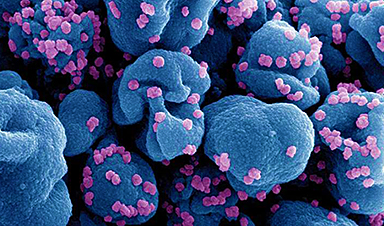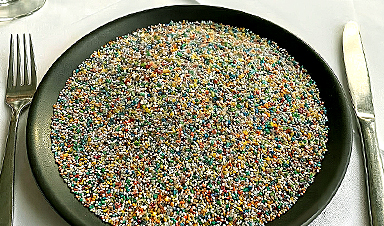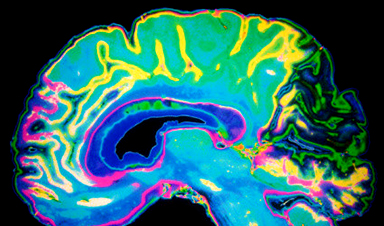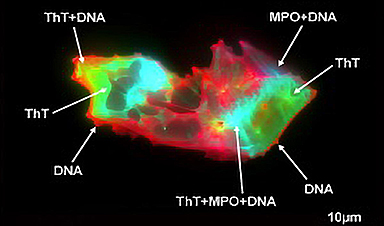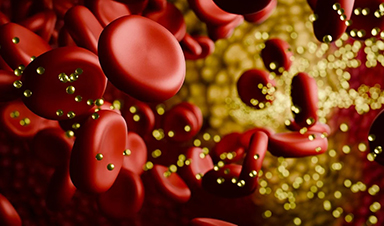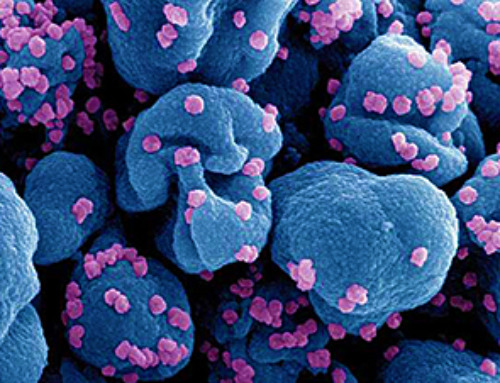Researchers at Harvard Medical School and National Cheng Kung University in Taiwan have created a new artificial intelligence model that could help doctors make more informed decisions about treatment and prognosis for patients with colorectal cancer, the second leading cause of cancer deaths worldwide.
The new tool can accurately predict the aggressiveness of a colorectal tumor, the likelihood of survival with and without disease recurrence, and the optimal therapy for the patient, solely by analyzing images of tumor samples, which are microscopic depictions of cancer cells.
Having a tool that answers such questions could help clinicians and patients navigate this wily disease, which often behaves differently even among people with similar disease profiles who receive the same treatment — and could ultimately spare some of the 1 million lives that colorectal cancer claims every year.
The researchers say that the tool is meant to enhance, not replace, human expertise.
"Our model performs tasks that human pathologists cannot do based on image viewing alone," said study co-senior author Kun-Hsing Yu, assistant professor of biomedical informatics in the Blavatnik Institute at HMS. Yu led an international team of pathologists, oncologists, biomedical informaticians, and computer scientists.
"What we anticipate is not a replacement of human pathology expertise, but the augmentation of what human pathologists can do," Yu added. "We fully expect that this approach will augment the current clinical practice of cancer management."
The researchers caution that any individual patient's prognosis depends on multiple factors and that no model can perfectly predict any given patient's survival. However, they add, the new model could be useful in guiding clinicians to follow up more closely, consider more aggressive treatments, or recommend clinical trials testing experimental therapies if their patients have worse predicted prognoses based on the tool's assessment.
The tool could be particularly useful in resource-limited areas both in this country and around the world where advanced pathology and tumor genetic sequencing may not be readily available, the researchers noted.
The new tool goes beyond many current AI tools, which primarily perform tasks that replicate or optimize human expertise. The new tool, by comparison, detects and interprets visual patterns on microscopy images that are indiscernible to the human eye.
The tool, called MOMA (for Multi-omics Multi-cohort Assessment) is freely available to researchers and clinicians.
Extensive training and testing
The model was trained on information obtained from nearly 2,000 patients with colorectal cancer from diverse national patient cohorts that together include more than 450,000 participants — the Health Professionals Follow-up Study, the Nurses' Health Study, the Cancer Genome Atlas Program, and the NIH's PLCO (Prostate, Lung, Colorectal, and Ovarian) Cancer Screening Trial.
During the training phase, the researchers fed the model information about the patients' age, sex, cancer stage, and outcomes. They also gave it information about the tumors' genomic, epigenetic, protein, and metabolic profiles.
Then the researchers showed the model pathology images of tumor samples and asked it to look for visual markers related to tumor types, genetic mutations, epigenetic alterations, disease progression, and patient survival.
The researchers then tested how the model might perform in "the real world" by feeding it a set of images it had not seen before of tumor samples from different patients. They compared its performance with the actual patient outcomes and other available clinical information.
The model accurately predicted the patients' overall survival following diagnosis, as well as how many of those years would be cancer-free.
The tool also accurately predicted how an individual patient might respond to different therapies, based on whether the patient's tumor harbored specific genetic mutations that rendered the cancer more or less prone to progression or spread.
In both of those areas, the tool outperformed human pathologists as well as current AI models.
The researchers said the model will undergo periodic upgrading as science evolves and new data emerge.
"It is critical that with any AI model, we continuously monitor its behavior and performance because we may see shifts in the distributions of disease burden or new environmental toxins that contribute to cancer development," Yu said. "It's important to augment the model with new and more data as they come along so that its performance never lags behind."
Discerning telltale patterns
The new model takes advantage of recent advances in tumor imaging techniques that offer unprecedented levels of detail, which nonetheless remain indiscernible to human evaluators. Based on these details, the model successfully identified indicators of how aggressive a tumor was and how likely it was to behave in response to a particular treatment.
Based on an image alone, the model also pinpointed characteristics associated with the presence or absence of specific genetic mutations — something that typically requires genomic sequencing of the tumor. Sequencing can be time-consuming and costly, particularly for hospitals where such services are not routinely available.
It is precisely in such situations that the model could provide timely decision support for treatment choice in resource-limited settings or in situations where there is no tumor tissue available for genetic sequencing, the researchers said.
The researchers said that before deploying the model for use in clinics and hospitals, it should be tested in a prospective, randomized trial that assesses the tool's performance in actual patients over time after initial diagnosis. Such a study would provide the gold-standard demonstration of the model's capabilities, Yu said, by directly comparing the tool's real-life performance using images alone with that of human clinicians who use knowledge and test results that the model does not have access to.
Another strength of the model, the researchers said, is its transparent reasoning. If a clinician using the model asks why it made a given prediction, the tool would be able to explain its reasoning and the variables it used.
This feature is important for increasing clinicians' confidence in the AI models they use, Yu said.
Gauging disease progression, optimal treatment
The model accurately pinpointed image characteristics related to differences in survival.
For example, it identified three image features that portended worse outcomes:
- Greater cell density within a tumor.
- The presence of connective supportive tissue around tumor cells, known as the stroma.
- Interactions of tumor cells with smooth muscle cells.
The model also identified patterns within the tumor stroma that indicated which patients were more likely to live longer without cancer recurrence.
The tool also accurately predicted which patients would benefit from a class of cancer treatments known as immune checkpoint inhibitors. While these therapies work in many patients with colon cancer, some experience no measurable benefit and have serious side effects. The model could thus help clinicians tailor treatment and spare patients who wouldn't benefit, Yu said.
The model also successfully detected epigenetic changes associated with colorectal cancer. These changes — which occur when molecules known as methyl groups attach to DNA and alter how that DNA behaves — are known to silence genes that suppress tumors, causing the cancers to grow rapidly. The model's ability to identify these changes marks another way it can inform treatment choice and prognosis.
News
Platelet-inspired nanoparticles could improve treatment of inflammatory diseases
Scientists have developed platelet-inspired nanoparticles that deliver anti-inflammatory drugs directly to brain-computer interface implants, doubling their effectiveness. Scientists have found a way to improve the performance of brain-computer interface (BCI) electrodes by delivering anti-inflammatory drugs directly [...]
After 150 years, a new chapter in cancer therapy is finally beginning
For decades, researchers have been looking for ways to destroy cancer cells in a targeted manner without further weakening the body. But for many patients whose immune system is severely impaired by chemotherapy or radiation, [...]
Older chemical libraries show promise for fighting resistant strains of COVID-19 virus
SARS‑CoV‑2, the virus that causes COVID-19, continues to mutate, with some newer strains becoming less responsive to current antiviral treatments like Paxlovid. Now, University of California San Diego scientists and an international team of [...]
Lower doses of immunotherapy for skin cancer give better results, study suggests
According to a new study, lower doses of approved immunotherapy for malignant melanoma can give better results against tumors, while reducing side effects. This is reported by researchers at Karolinska Institutet in the Journal of the National [...]
Researchers highlight five pathways through which microplastics can harm the brain
Microplastics could be fueling neurodegenerative diseases like Alzheimer's and Parkinson's, with a new study highlighting five ways microplastics can trigger inflammation and damage in the brain. More than 57 million people live with dementia, [...]
Tiny Metal Nanodots Obliterate Cancer Cells While Largely Sparing Healthy Tissue
Scientists have developed tiny metal-oxide particles that push cancer cells past their stress limits while sparing healthy tissue. An international team led by RMIT University has developed tiny particles called nanodots, crafted from a metallic compound, [...]
Gold Nanoclusters Could Supercharge Quantum Computers
Researchers found that gold “super atoms” can behave like the atoms in top-tier quantum systems—only far easier to scale. These tiny clusters can be customized at the molecular level, offering a powerful, tunable foundation [...]
A single shot of HPV vaccine may be enough to fight cervical cancer, study finds
WASHINGTON -- A single HPV vaccination appears just as effective as two doses at preventing the viral infection that causes cervical cancer, researchers reported Wednesday. HPV, or human papillomavirus, is very common and spread [...]
New technique overcomes technological barrier in 3D brain imaging
Scientists at the Swiss Light Source SLS have succeeded in mapping a piece of brain tissue in 3D at unprecedented resolution using X-rays, non-destructively. The breakthrough overcomes a long-standing technological barrier that had limited [...]
Scientists Uncover Hidden Blood Pattern in Long COVID
Researchers found persistent microclot and NET structures in Long COVID blood that may explain long-lasting symptoms. Researchers examining Long COVID have identified a structural connection between circulating microclots and neutrophil extracellular traps (NETs). The [...]
This Cellular Trick Helps Cancer Spread, but Could Also Stop It
Groups of normal cbiells can sense far into their surroundings, helping explain cancer cell migration. Understanding this ability could lead to new ways to limit tumor spread. The tale of the princess and the [...]
New mRNA therapy targets drug-resistant pneumonia
Bacteria that multiply on surfaces are a major headache in health care when they gain a foothold on, for example, implants or in catheters. Researchers at Chalmers University of Technology in Sweden have found [...]
Current Heart Health Guidelines Are Failing To Catch a Deadly Genetic Killer
New research reveals that standard screening misses most people with a common inherited cholesterol disorder. A Mayo Clinic study reports that current genetic screening guidelines overlook most people who have familial hypercholesterolemia, an inherited disorder that [...]
Scientists Identify the Evolutionary “Purpose” of Consciousness
Summary: Researchers at Ruhr University Bochum explore why consciousness evolved and why different species developed it in distinct ways. By comparing humans with birds, they show that complex awareness may arise through different neural architectures yet [...]
Novel mRNA therapy curbs antibiotic-resistant infections in preclinical lung models
Researchers at the Icahn School of Medicine at Mount Sinai and collaborators have reported early success with a novel mRNA-based therapy designed to combat antibiotic-resistant bacteria. The findings, published in Nature Biotechnology, show that in [...]
New skin-permeable polymer delivers insulin without needles
A breakthrough zwitterionic polymer slips through the skin’s toughest barriers, carrying insulin deep into tissue and normalizing blood sugar, offering patients a painless alternative to daily injections. A recent study published in the journal Nature examines [...]



